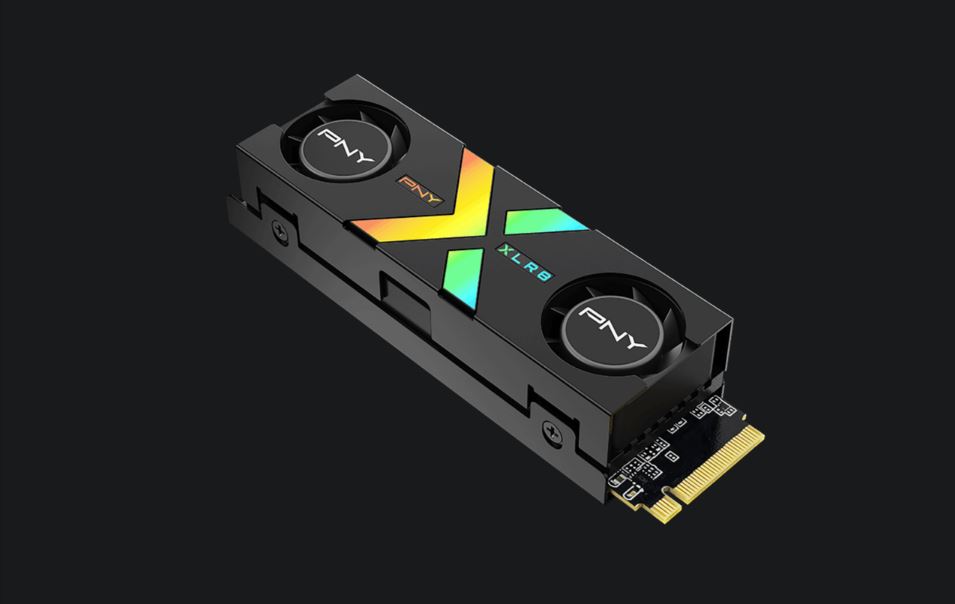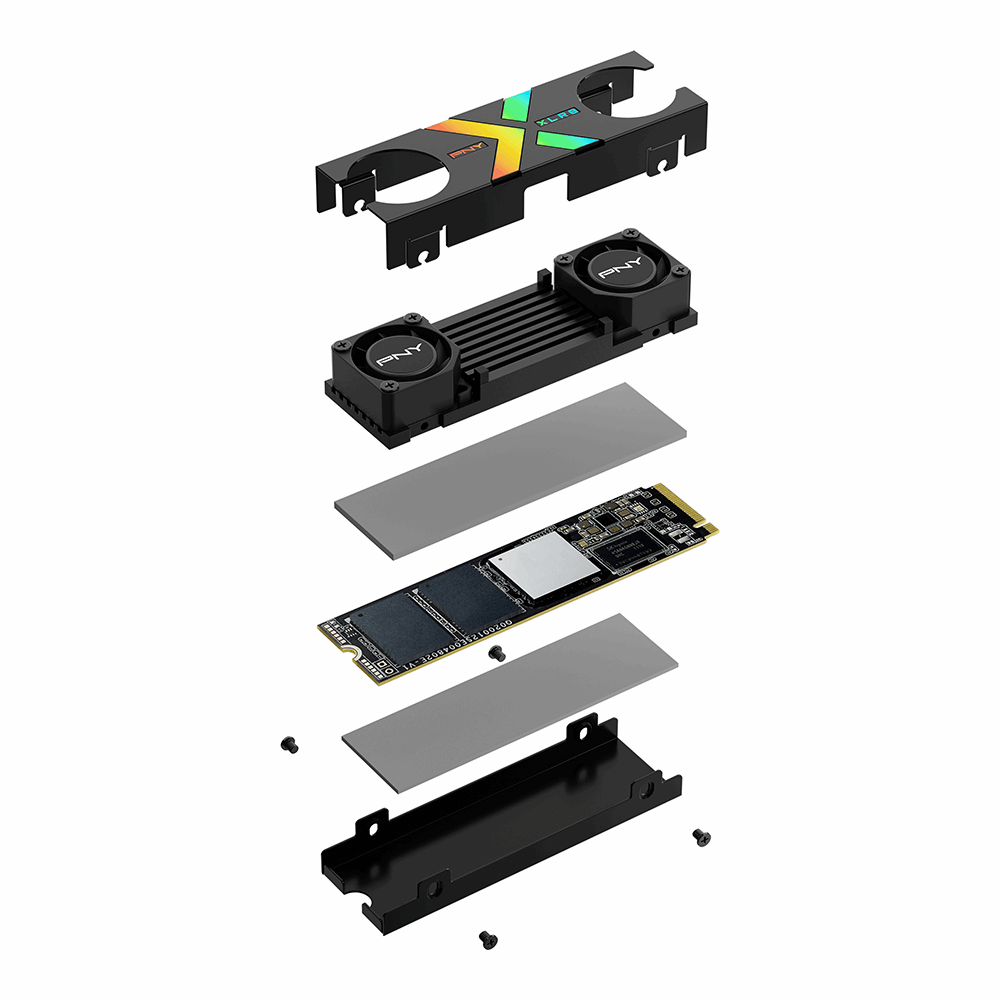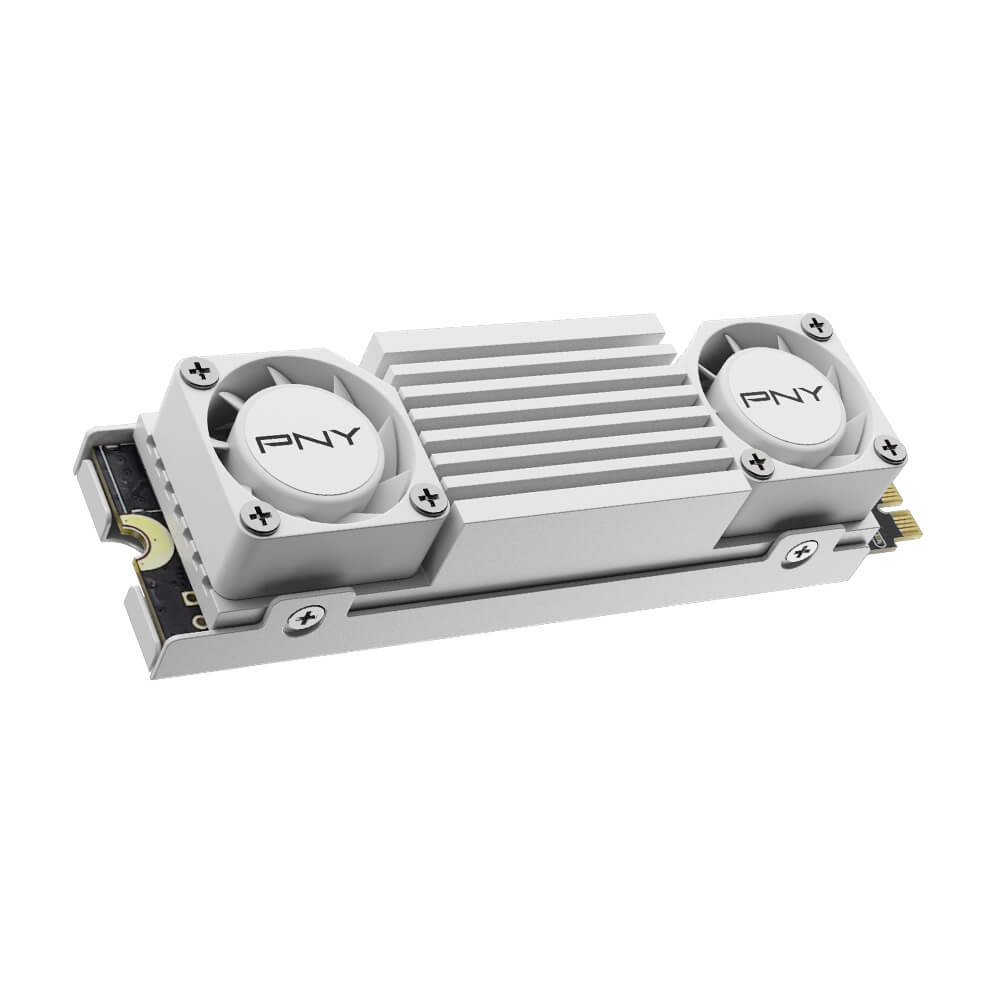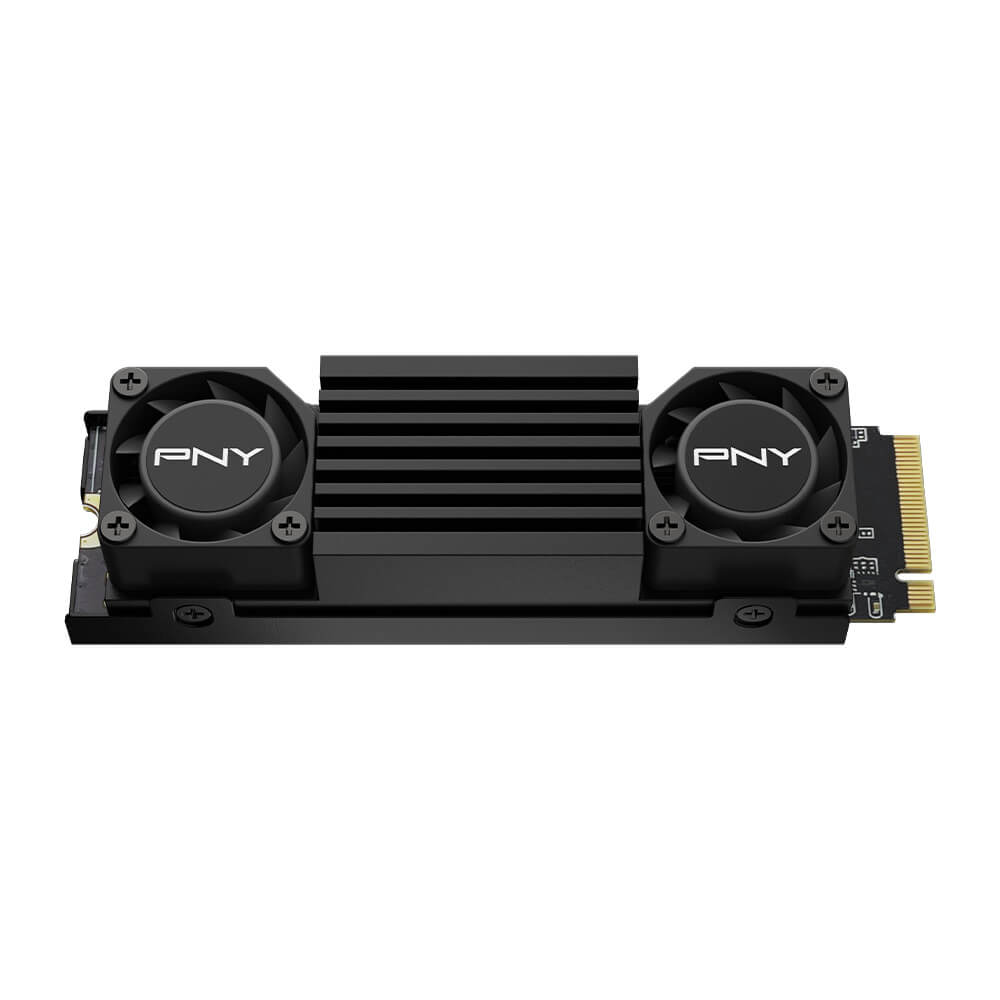PNY's New PCIe 5.0 SSD Has an RGB Cooler With Dual Fans
Looks Like a Tiny GPU

While there's definitely an argument to be made about RGB overload, there's no doubt that colored lights can make a component stand out, whether on the shelf or in your system. So it's no surprise that PNY is trying to appeal to the masses by giving you some aesthetic options with its latest XLR8 CS3150 PCIe 5.0 NVMe SSD.
These sticks are cooled by two fans on both ends of the heatsink, and come in either black, white or an Epic-X RGB backlight version. The latter in particular looks like a tiny graphics card.
The drive is 39.8mm (1.56 inches) tall, which makes it a whole lot friendlier to other components in your case than the Nextorage NE5N. The drive is actually fairly compact, given it houses a backplate, two slices of the thermal pad with the drive in between, the heatspreader and, with its RGB variant, a shroud.



The 1TB version is rated to 11,500 MB/s and 8,500 MB/s sequential read and write speeds, with the 2TB rated up to 12,000 MB/s and 11,000 MB/s. Its fans draw power via a 4-pin power connector. Hopefully that's referring to a 4-pin fan headers plug and not something proprietary or as ancient as Molex. The specs sheet and images don't mention specifics there. The Inland TD510 which uses the same controller includes a Molex/ SATA Power connector to power up its fan. If it does use headers, it would be nice to see if variable fan speeds can be controlled or if it makes any difference at lower RPM, hence lower noise.
Here are the drive's full specs:
| Specification | Row 0 - Cell 1 |
| Usable Capacities | 1TB / 2TB |
| NAND Components | 3D Flash Memory |
| Interface | PCIe Gen5 x4 NVMe 2.0 |
| Form Factor | M.2 2280 |
| Package Dimensions (L×W×H) | 155.9x 55.1x 39.8 mm |
| Product Dimensions (L×W×H) | 76 x 23.5 x 17.5 mm (Max) |
| Weight | 53g |
| Max Sequential Read* | 1TB: up to 11,500 MB/s |
| Row 9 - Cell 0 | 2TB: up to 12,000 MB/s |
| Max Sequential Write* | 1TB: up to 8,500 MB/s |
| Row 11 - Cell 0 | 2TB: up to 11,000 MB/s |
| Power Connector for Heatsink Fans | 4-pin Power Connector |
| PCIe Link Power Management | S0/PS1/PS2/PS3/PS4,APST, ASPM, L1.2 |
| Operating Temperature | 0°C ~ 70°C |
| Storage Temperature | -40°C ~ 85°C |
| Certifications | BSMI, CE, FCC, REACH, RoHS, VCCI, PCIe Base 5.0, NVMe 2.0 |
| MTBF | 1,600,000 Hours |
| Error Correction Code | LDPC (Low Density Parity Check) ECC Algorithm |
| Product Health Monitoring | Self-Monitoring, Analysis and Reporting Technology (S.M.A.R.T) |
| Full End-to-End Data path protection | Supported |
| Performance Optimization | TRIM (requires OS support) |
| Warranty | 5-year Limited Warranty |
| Note | *Reading speed and reading speed labels are based on PNY internal testing results and may have different results due to different devices or systems. |
With active cooling increasingly included on these high-end SSDs, manufacturers should also include fan specs such as bearing type, CFM and the max dB rating. This is standard practice with fans, CPU and GPU cooler makers.
The Tall Tale of Tall Heatspreaders, Waterblocks and Fans
So far, all PCIe 5.0 SSDs with Phison chips are either provided with passive cooling such as the Aorus Gen 5 and the Crucial T700, or with a heatsink pre-installed and a tiny fan like Micro-Center's in-house brand Inland TD510. As we saw in our review of the Inland drive, the fan didn't actually improve cooling. Naturally, it depends on how the cooling is designed to complement the chips and their layout, as well as how much air is already circulating in your case and around your M.2 slot.
But one of the appealing aspects of an M.2 drive has been its thin form factor, which can hidden away under motherboard shrouds, like a six-M.2-slot ASRock Z790 Nova WiFi. But drives like these with tall heatsinks and fans have to live loud and proud, sticking up off your motherboard.
This issue, though, is is largely down to the Phison E26 controllers at the heart of these drives. As was mentioned heavily in our Corsair MP700 review, there is a lot of work to be done on the efficiency front with PCIe 5.0 SSDs. In the meantime, Corsair sells a liquid cooling block for this 2280 form factor NVMe drive, which reminds me of the days of squeezing performance from Intel's Prescott Pentium 4 processors, which were inefficient for their time.
Stay On the Cutting Edge: Get the Tom's Hardware Newsletter
Get Tom's Hardware's best news and in-depth reviews, straight to your inbox.
We should see new PCIe 5.0-based controllers in the following months and hopefully quicker, cooler and quieter SSDs hitting store shelves. Just a day ago, a Silicon Motion SM2508 controller showed promising efficiency and performance. There's also the TeamGroup T5 PCIe 5.0 NVMe that will use an InnoGrit G5666 controller.
We'll likely learn more about how efficient these drives are early next year at CES 2024 or not long after. So if you're not keen on a PCIe 5.0 drive due to fans and bulky coolers, you might not have long to wait for better options. Just don't expect them to be cheap when all signs are pointing to SSD price increases next year.

Roshan Ashraf Shaikh has been in the Indian PC hardware community since the early 2000s and has been building PCs, contributing to many Indian tech forums, & blogs. He operated Hardware BBQ for 11 years and wrote news for eTeknix & TweakTown before joining Tom's Hardware team. Besides tech, he is interested in fighting games, movies, anime, and mechanical watches.
-
PEnns The beauty of the SSD? It has no moving parts that would failReply
So, let's add something with moving parts to it..... -
froggx ReplyAmdlova said:Tiny fan to fail... but with out tbw I think the ssd will fail first. Keep away!
i'm inclined to agree, i won't even consider a drive without a TBW spec posted. MTBF isn't all that useful for figuring out drive life. correct me if i'm wrong, but isn't 1,600,000 hrs something like 182 years?
it has a 5-year limited warranty... but that word "limited" always makes me nervous. -
bolweval Wonder what octave those fans put out, must be pretty high pitched? Then also consider they are in stereo...:unsure:Reply